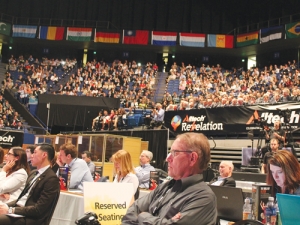The Chinese bought a one year supply of milk powder from world markets then suddenly stopped buying, Alltech’s chief innovation officer, Aidan Connolly, says.
That’s having a dramatic effect on prices in China, New Zealand and around the world, he told the opening day of Alltech’s REBELation Symposium in Kentucky, attended by 3000 international delegates.
“Whether the Chinese government is choosing to manipulate the markets or whether [it] is buying strategically, the reality is the consumption of milk by China is tremendously affecting the price of milk around the world,” he said.
“The Chinese effectively purchased a year’s supply of milk powder from the world markets and suddenly in one fell swoop chose not to buy anymore.”
Connolly was illustrating how much Chinese buying was now influencing milk prices. He said until then dairy production had had a positive outlook and milk prices had been at a very high level, also extremely affected by what was going on in China.
The reform of the European common agriculture policy also has tremendous implications for milk prices, not just in Europe but the rest of the world, he said.
“We are no longer living in a world where an Irish person can produce milk in Ireland and not worry about the milk price somewhere. We are no longer living in a world where it is possible to consider what is happening in some part of the United States and not be concerned about what the Chinese purchasers are doing.
“Increasingly we see that these markets and that interconnection is making it extremely important to understand the world market.”
Connolly, who is also Alltech’s vice-president corporate accounts, said there were big differences in cost of production: Uruguay, Argentina, New Zealand and Australia have a tremendous cost advantage. It will be interesting to see if the European Union reforms will bring down the cost of production in Europe and enable access to other countries. Due to imported feed costs, etc the cost of production in China is also still substantially higher than in Argentina, New Zealand and even the United States.
The milk output from China is increasing and will continue to increase but they are limited by land.
Looking at the largest producers, he noted that Fonterra is now not just a New Zealand company; it is also present in China and other parts of the world as were all the other companies in the top 20.
He said the future for milk will see a steady 1.8% per annum growth globally.
“The demand will increase faster than consumption and production levels, which should lead to us seeing a higher price.”


















